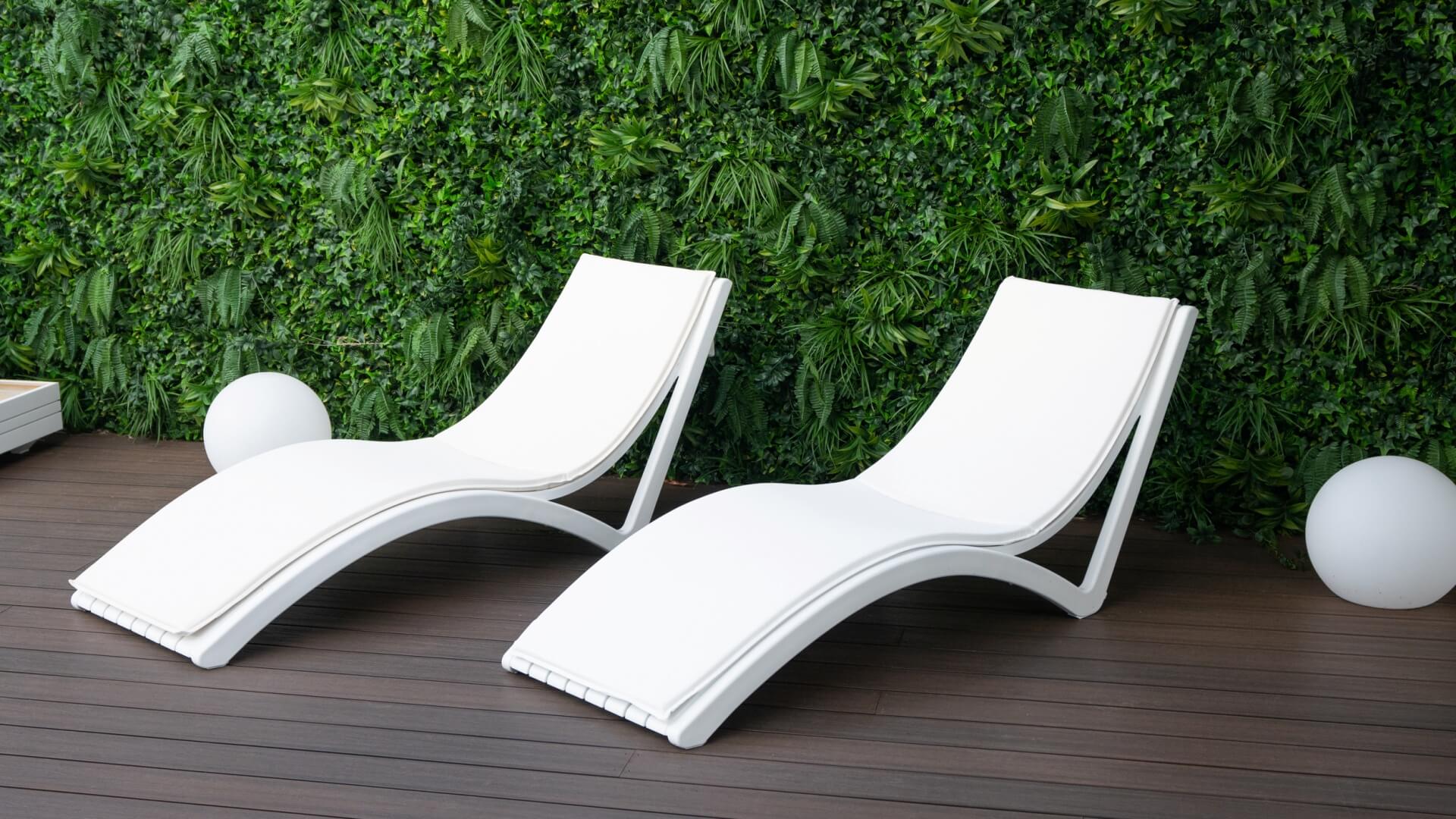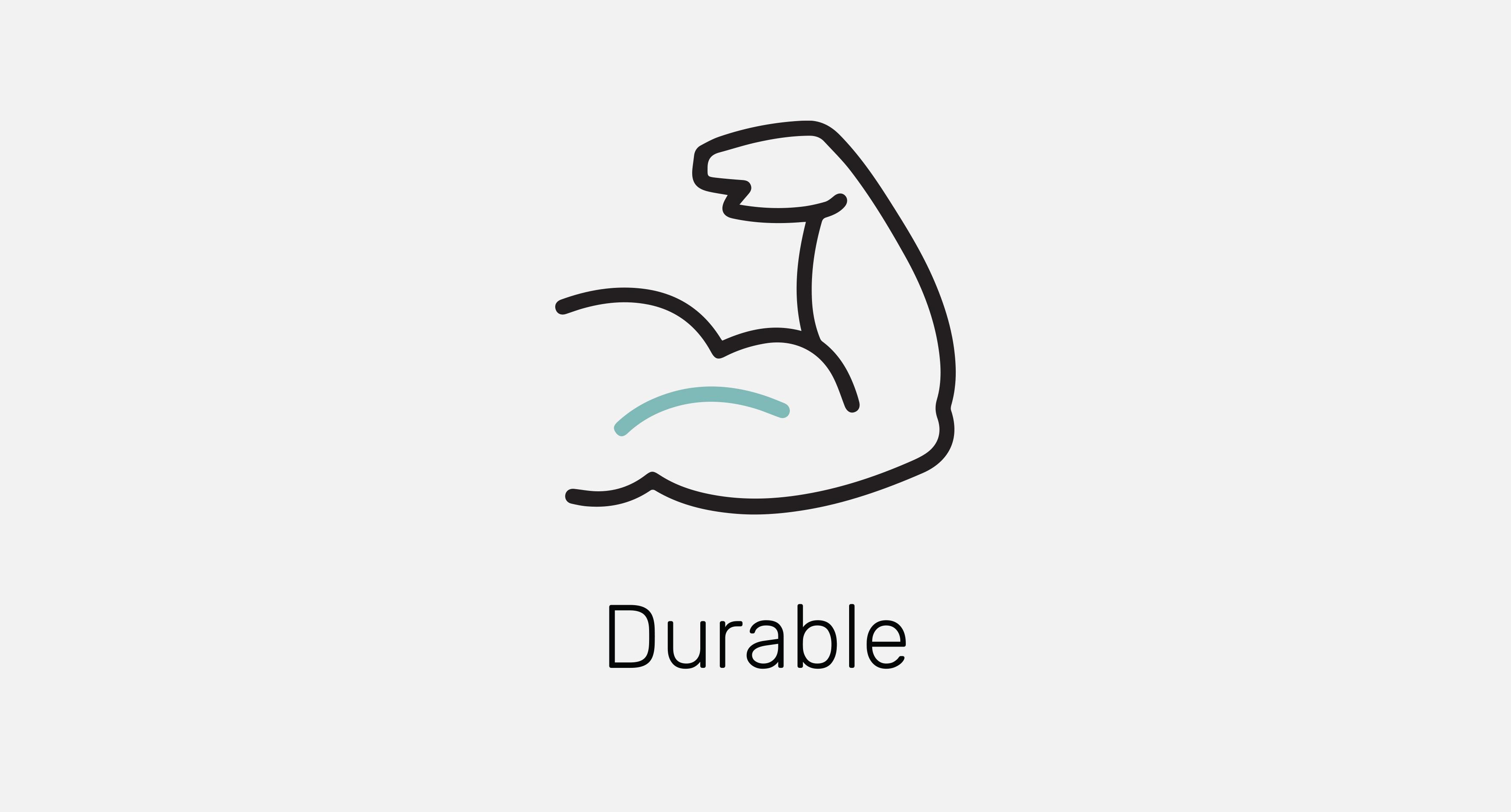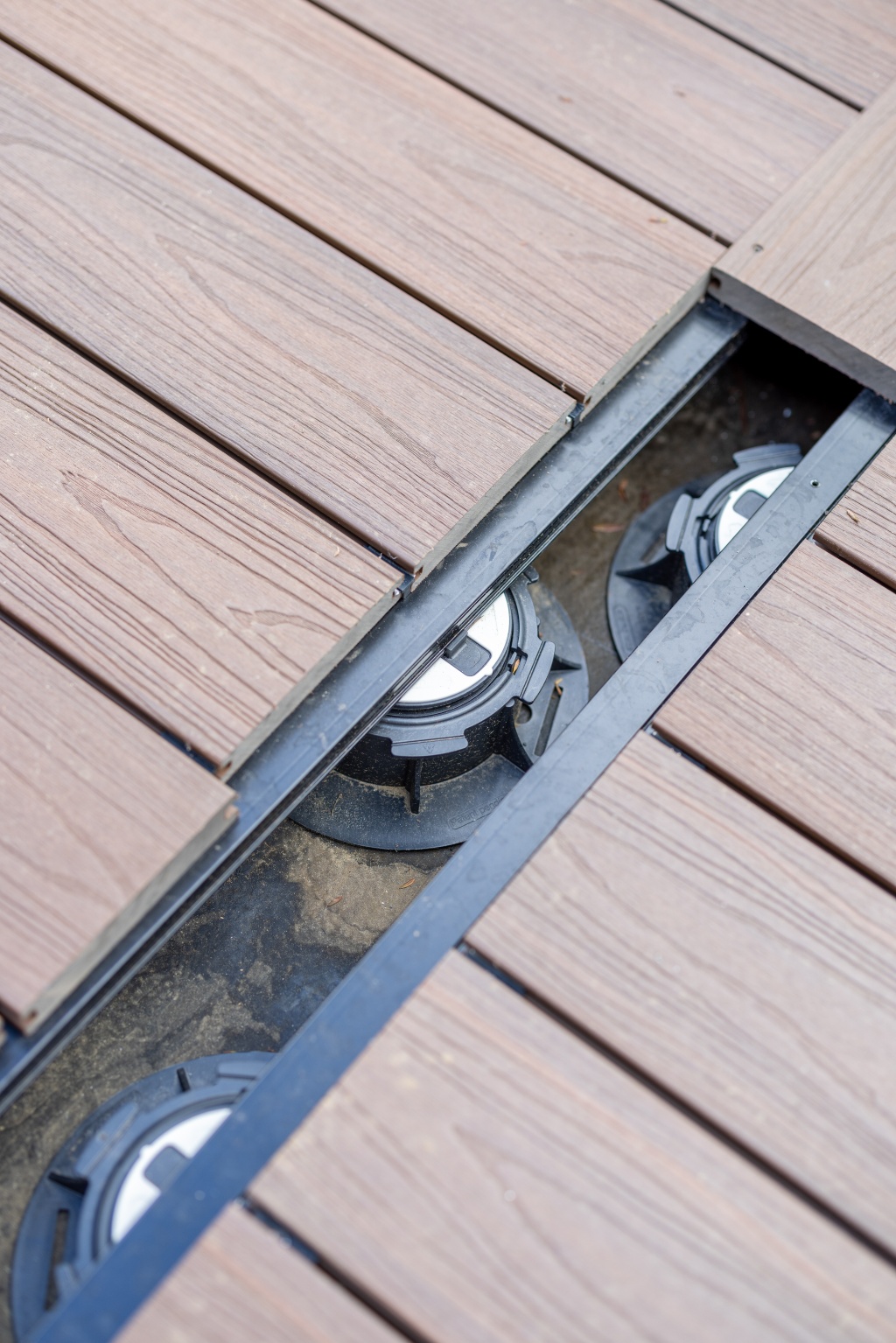
COMPOSITE DECKING
Explore Our Complete Composite Decking Range.
What are the benefits of composite decking?
The main benefit is its superiority in performance over plastic decking, requiring far less maintenance than wooden alternatives. Its versatility and slip resistance means you can use it for just about any outdoor space.
Hardwearing and durable, our decking range resists fading, UV, the elements, mould, mildew, pests, and stains. You’ll enjoy the benefits of timber without the work and maintenance. Our products are eco-friendly and sourced from 95% recycled materials. Since it’s available at great value in a range of colours and different textures, you’re sure to find an aesthetically pleasing solution suitable for your commercial or residential project.
-

High quality decking
We offer superior quality, bringing together the stunning aesthetics of natural wood with an unmatched level of durability, strength, and resistance to the elements. Without the need for oiling, sanding, staining, and other treatments, your composite decking will be naturally resistant to stains, fading, UV damage, mold, termites, mildew, moisture, splitting, and splintering.
-

Eco-Friendly
Unlike traditional hardwood decking which is likely to contribute to deforestation and habitat destruction, choosing composite decking over timber decking means you don’t have to cut down trees for a durable deck that lasts longer before it needs to be replaced. Our decking is 95% sourced from recycled materials, saving these reclaimed inputs from landfill. Sustainable and low on carbon emissions, we don't compromise on quality or reliability.
-

Low maintenance
Composite material is far easier to maintain than traditional timber. It’s naturally resistant to everything from UV, fading, termites, and mold to staining, splintering, and moisture damage, without the need for repeated staining, sanding, oiling, and other treatments. With just a simple clean with non-abrasive household products, your new deck can last you a long time and save you hundreds on maintenance and repair costs.
-

Anti Slip decking
Our unique blend of composite materials used to create and bind the material hinders the usual slip hazards on timber decking, such as mold. The texture and depth of the finish on our decking can provide you with a safe flooring solution for any situation.
-

Built to last
Consider composite decking as a better version of timber or wood decking. In addition to better quality, eco-friendliness, and next-to-zero maintenance, you’ll also enjoy cost effectiveness and durability. Our decking is moulded and not cut or shaped from natural materials, so it can be used in a wide range of applications and you don’t need to be concerned about defects in the wood.
-

Projects with a peace of mind
Our whole decking range comes with a 25-year warranty for all residential applications, giving you that extra piece of mind you need in the hot Australian summers. -

Fire-resistance
Our composite materials, with BAL29 fire rating deals with the protection of your building from ember attack and burning debris ignited by wind-borne embers and radiant heat.
Ease of Installation
Designed for seamless installations, ensuring homeowners and builders an effortless and swift decking setup. The precision-made boards interlock with ease, significantly reducing the installation time.
With a straightforward installation process, the decking is a testament to modern-day solutions that prioritise convenience without compromising on quality.

Low Maintenance
With composites, there is no incessant sanding, staining, or sealing, which usually comes with traditional timber decking. The robust composite material resists staining, fading, and mold, preserving its vibrant appearance and structural integrity through seasons of use.
A simple cleaning routine is all it takes to maintain the pristine condition of a deck that uses composite materials.

Eco-Friendly Choice
In alignment with contemporary eco-conscious values, KEKSIA’s is an exemplary choice for any environmentally savvy project. Our decking material is composed of recycled wood fibres and plastics, aiding in reducing the environmental footprint.
Choosing our composite decking means stepping into a realm of sustainable, aesthetic, and enduring outdoor living.

Frequently Asked Questions
What is composite decking made of?
There are different types of composites that make up the actual material itself. The composite core is made of 60% recycled wood fibre and 40% Recycled HDPE (High-Density Polyethylene). The Co-Extruded Cap Layer is made out of Virgin Polyethylene – Dupont with UV pack.
What are the different colours available?
The composite comes in IPE, Teak, Walnut, Aged wood, Antique, Silver Grey and Beech. You can view the colours and textures on offer in our very own Evergreen, as well as the terrace and coastal decking ranges.
Do composite materials rot over time?
Composites have an inherently hardwearing and durable nature. As such, our decking does not suffer from mould damage or rot. This is largely why one of the main benefits of composite material centres around its superior performance.
Designed to protect against moisture damage, it also features materials that actively guard against creating a suitable surface for mould to grow. Eco-friendly and sourced from 95% recycled materials, it has the added benefit of requiring minimal upkeep.
It’s also important to note that whilst our decking can resist conditions associated with harsh weather such as fading, stains, mould and mildew, elements of style are not compromised. This means that the decking can be installed in a variety of outdoor spaces, be it commercial or residential. Giving you the added luxury of having a complete outdoor dining, living or entertaining area. Further, composite decking is also slip resistant which affords you peace of mind.
Does composite decking get hotter than wood?
When looking to create an outdoor space, it’s important to understand how materials will interact with the surrounding environment. With this in mind, the decking will not get hotter than traditional wood.
Thanks to advancements in materials and manufacturing processes, the composite is resistant to heat. Such advancements have a variety of associated benefits.
Another advantage is the fact that this heat resistance plays an active role in ensuring that composites do not fade. This is quite a feat when you consider that deckings are always exposed to outdoor conditions such as harsh sunlight.
It’s worth noting that decking colour choices will play a role in the temperature of your deck. For example, lighter-coloured composites will traditionally stay cooler than those complete with a darker colour.
How do you clean composite material?
The composite can be cleaned in a variety of ways. Cleaning may simply involve sweeping the surface to rid of any debris such as leaves, branches and dirt. Cleaning may also be more involved and require a pressure cleaner or mop.
Before placing a coarse broom or soap solution on your decking, it’s always a good idea to check the cleaning instructions associated with your specific variety. This way you can ensure that you won’t scratch or strip the surface.
A good cleaning routine is to sweep your deck either weekly or monthly. As decks are typically fully or partially exposed to the outdoors, all sorts of things may appear on the surface. Sweeping will ensure you can get rid of surface dirt, dust and tree debris.
For a more thorough clean, it’s advised that once or twice a year deckings receive a full wash. For small to medium sized settings, this clean could be completed with a mop or a sponge. For larger-sized decks, a pressure cleaner might be more appropriate.
When creating the soap solution to clean your deck, opt for mild soaps that have been diluted with water. From there, firstly hose off the deck and then scrub with the soap solution. The final step for a thorough clean is to rinse the deck with warm water to remove all the soap. Otherwise, soap has been known to create a film that can potentially damage the composite surface.
Can you oil or paint composite decking?
When using the right variety of stain or paint, the decking can be successfully modified.
For example, those choosing to paint should opt for acrylic latex exterior primer and a latex paint with either a satin or semi-gloss finish. Meanwhile, those looking to stain need to choose an acrylic latex stain with both UV and mildew resistance.
Both staining and painting require different application techniques. As such, those looking to paint will need to clean the decking’s surface before applying the primer and then at least two coats of paint. For those wishing to stain their decking, the stain’s inherently thin consistency means that you only need to apply one coat.
In terms of maintenance, a painted deck is less involved. This is because a properly sealed and painted deck can be pressured washed. On the other hand, pressure washing a stained deck is not advised. Additionally, the stain will need to be reapplied every two to eight years while a painted composite will last well over a decade.
Can you install the decking over concrete?
Over the years, there have been many different design trends for outdoor areas. This means that, for some, their backyard is currently all concrete. While this may not seem like an ideal surface, you do have options. Composite decking can be installed over concrete. In fact, installation over hard surfaces is often preferred to surfaces such as gravel, grass or even sand. This is because harder surface areas like concrete are inherently more stable and durable.
However, it’s worth noting that installation will require some work. This is because the decking over concrete will need to be installed over a framework. Otherwise, it will lack adequate drainage which can result in problems in the future.